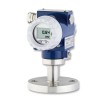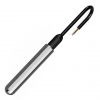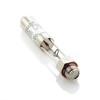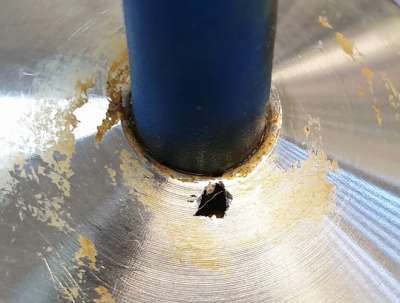
Despite sea water being one of the harshest environments where a liquid level sensing device can be used, it is surprisingly common to find sensors that have been installed and fail much sooner than expected, should never have been specified in the first place.
You have a sensor which has failed after being submerged in seawater for a period of time. When you take the sensor out of the water you notice some marks which look like bumps on the surface of the material but everything else look intact.
The surface indentations, or any change in the appearance of the outer housing is likely to be the cause of pitting and corrosion by seawater. Most likely the housing is made from stainless steel, and the degree of corrosion will depend on the grade of stainless steel, the conditions and length of submersion.
Featured seawater liquid level sensor products
 DMK 458 Seawater Low Range Pressure Transmitter - Sea water corrosion resistant low range pressure transmitter for marine, ship and offshore engineering.
DMK 458 Seawater Low Range Pressure Transmitter - Sea water corrosion resistant low range pressure transmitter for marine, ship and offshore engineering.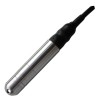 S12C SDI-12 Seawater Pressure & Temperature Transducer - SDI-12 protocol transducer for sensing water depth level and temperature in seawater, brackish water, tidal water, saline water or leachate.
S12C SDI-12 Seawater Pressure & Temperature Transducer - SDI-12 protocol transducer for sensing water depth level and temperature in seawater, brackish water, tidal water, saline water or leachate.
Liquid level sensors made from stainless steel tend to use thinner materials for the housing shell and the sensing part of the probe, and although stainless steels can be used in many applications involving seawater, it is still susceptible to corrosion slowly over time. For thicker parts the corrosion will be less noticable, but for thinner components it will be much more rapid and eventually become a problem.
A liquid level sensor that is submerged in seawater has basically two modes of possible failure due to seawater corrosion.
Thin diaphragms made from incompatible materials will become severely pitted, eventually allowing seawater to enter internally destroying more sensitive components and damaging the electrical or mechanical properties of the diaphragm.
The other possible failure mode is where the outer housing has corroded to such a degree that seals, welds and joints are compromised due to a changing surface causing gaps to open up, or where the actual material has been so badly pitted, that it penetrates through the complete thickness of the material. Once seawater enters the inside of the housing, the electronics inside will be destroyed.
Featured seawater liquid level sensor products
 IMCTL Submersible Liquid Level and Temperature Transmitter - IP68 combined liquid level and temperature, dual 4 to 20 milliamp output pressure sensor with a 316L or Marine Bronze housing.
IMCTL Submersible Liquid Level and Temperature Transmitter - IP68 combined liquid level and temperature, dual 4 to 20 milliamp output pressure sensor with a 316L or Marine Bronze housing. Abstraction pump protection using a screw-on hydrostatic level transmitter in a tidal river - Learn about the deployment of a 4-20mA screw-on hydrostatic level sensor for monitoring fluctuating seawater levels. Key aspects include the benefits of a fixed threaded mounting, diaphragm vulnerability without a nose cone, and protecting the atmospheric vent tube.
Abstraction pump protection using a screw-on hydrostatic level transmitter in a tidal river - Learn about the deployment of a 4-20mA screw-on hydrostatic level sensor for monitoring fluctuating seawater levels. Key aspects include the benefits of a fixed threaded mounting, diaphragm vulnerability without a nose cone, and protecting the atmospheric vent tube.
For example if a sensor uses a pressure sensing based technology to measure water level, then the diaphragm which is typically a very thin material will be particularly vulnerable to corrosion if it is not made from a material which has a very low rate of corrosion in seawater.
The sensing diaphragm materials to look for when selecting a sensor for use with seawater are ceramic alumina Al2O3, hastelloy C276 or titanium, both of which should last a very long time, with minimal deterioration due to corrosion.
For the sensor housing there is a wider choice because the material can be thicker and does not have to have any special elastic property necessary for use as a sensing material. The materials to look for are Marine Bronze, Copper Nickel alloy, Titanium, Hastelloy C276, PVC, PP or PVDF, all of these should hold up for a long time in seawater and last years.
Featured seawater liquid level sensor products
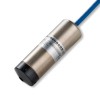 Desalination plant feed tank submersible level sensor - Highly durable submersible level sensor designed for harsh desalination plant environments. Copper-nickel alloy housing and ceramic diaphragm ensure long-term reliability in aggressive saline conditions. 4-20mA output, 0-5mH2O range.
Desalination plant feed tank submersible level sensor - Highly durable submersible level sensor designed for harsh desalination plant environments. Copper-nickel alloy housing and ceramic diaphragm ensure long-term reliability in aggressive saline conditions. 4-20mA output, 0-5mH2O range. S12C SDI-12 Seawater Pressure & Temperature Transducer - SDI-12 protocol transducer for sensing water depth level and temperature in seawater, brackish water, tidal water, saline water or leachate.
S12C SDI-12 Seawater Pressure & Temperature Transducer - SDI-12 protocol transducer for sensing water depth level and temperature in seawater, brackish water, tidal water, saline water or leachate.
Related Help Guides
- Measuring the volume of liquid in a horizontal cylinder tank
- Material Compatibility Resources
- Considerations for monitoring Landfill Water Level
Related Technical Terms
- Al2O3
- Bonded Seal
- Dry Cell
- Dry/Dry
- EPDM – Ethylene Propylene Diene Monomer
- FEP – Fluorinated Ethylene Propylene
- FFKM – Perfluoroelastomer
- FKM – Fluoroelastomer
- Food Grade
- IP Ratings
- PUR, PU – Polyurethane
- PVC – Polyvinyl Chloride
- Stainless Steel Pressure Sensors
- Wet/Dry
- Wet/Wet
- Wetted Parts
Related Product and Application Guides
Contact us about this Stop sea water level or depth sensor failures due to pitting or corrosion page to request more information, or to discuss your application requirements.


